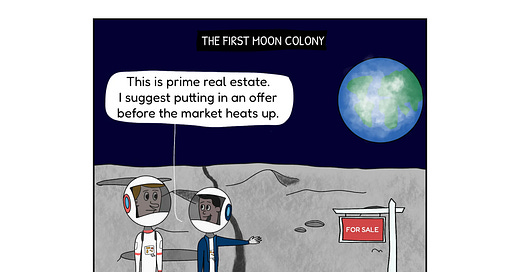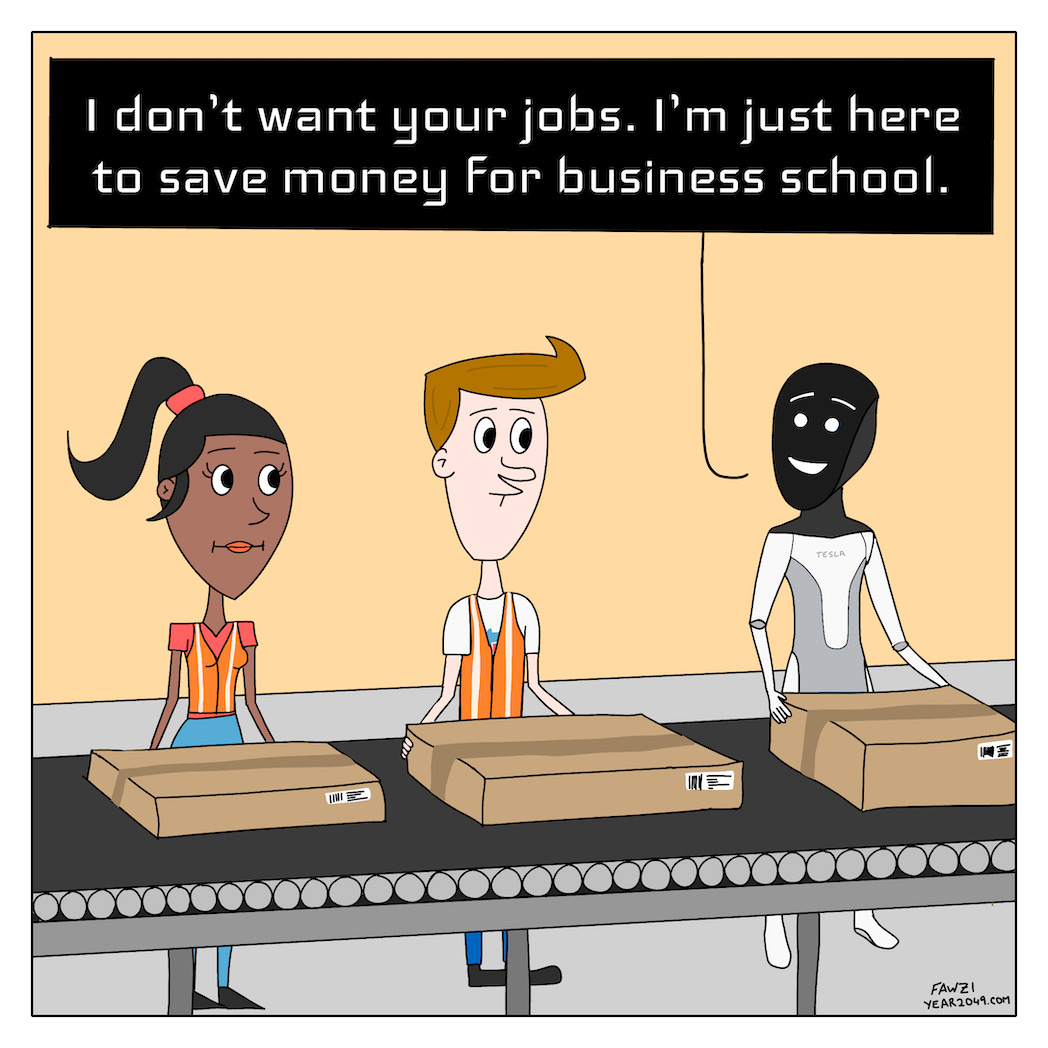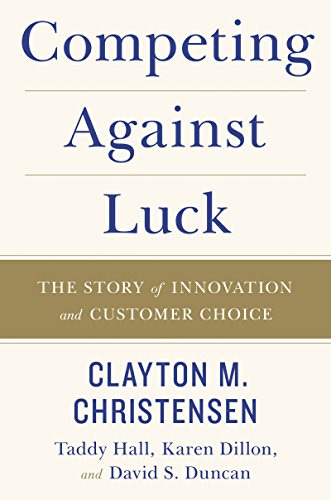Future Bites #6
A brief history of automation anxiety, why the AI open letter was a missed opportunity, a sarcastic robot powered by GPT-4, a guide to designing AI-powered products, and more.
Hey friends 👋
Welcome back to Year 2049! I wasn’t expecting to get such a positive reaction to my AI Twin post, so thank you for enjoying my little experiment. I have some more experiments that I want to try, along with my usual deep dives. Stay tuned and thank you for joining me on the journey.
– Fawzi
If this was forwarded to you, subscribe to receive weekly insights, analysis, and resources to help you stay on top of emerging and disruptive technologies:
Today’s Edition:
Cartoon: The first moon colony
Stories:
A brief history of automation anxiety
Why the open letter to pause AI development was a missed opportunity
A sarcastic robot powered by GPT-4
Resources:
People + AI Design Guidebook
Competing Against Luck
✏️ Cartoon
The first moon colony
Inspiration: The Lunar Gold Rush + NASA just revealed the crew for the Artemis II mission in 2024
📰 Stories
A brief history of automation anxiety
The recent AI hype wave has only worsened fears around automation. While these fears may seem new, we’ve had them for at least the past century. One of my favourite publications on Substack,
, gathered a century's worth of automation fears showing the fearmongering headlines across newspapers and magazines.Looking at them today, they seem overblown. People still have jobs and automation has improved the world in many ways. Of course, this is easy to say with the benefit of hindsight and it's difficult to predict the future based on where we are today. We can quickly identify which tasks or jobs AI can automate. But imagining what new jobs it will create is much more challenging.
Reframing the question helps. I ask myself: what problems or opportunities does AI create? By framing our thinking this way, we identify opportunities for new industries and professions where humans will play an important role.

This framing explains how my current job as a UX Designer was born. It was the result of the rise of computers, smartphones, and the Internet. The job didn't exist before. These technologies created a need to design digital experiences for businesses across all industries. The idea may seem obvious now, but imagine explaining my job to someone in the 1980s when these technological advancements were only starting to appear.
Should we pause AI development?
The latest debate in AI is whether we should pause the development of models smarter than GPT-4. This follows the open letter signed by the likes of Elon Musk, Steve Wozniak, Emad Mostaque, and many of the top AI scientists in the world.
Contemporary AI systems are now becoming human-competitive at general tasks, and we must ask ourselves: Should we let machines flood our information channels with propaganda and untruth? Should we automate away all the jobs, including the fulfilling ones? Should we develop nonhuman minds that might eventually outnumber, outsmart, obsolete and replace us? Should we risk loss of control of our civilization?
– from Pause Giant AI Experiments: An Open Letter
The signatories are calling for a pause on developing large AI models for at least 6 months.
AI should be developed safely and responsibly due to its outsized impact and scale compared to previous technologies, but the proposal is impractical and impossible to enforce. It also perpetuates the fears and anxieties around automation that I mentioned above.
We shouldn’t ignore the risks and dangers of AI, but this open letter feels like a missed opportunity to convert the massive attention it got into concrete and unified action. Instead, it created a divide.
A more productive approach would’ve been for them to frame the letter as an initiative to unite competing companies, leaders, and scientists into creating open standards and protocols for responsible and safe AI development based on their expertise. This is something they already mention in the letter, but it’s overshadowed by the desire to pause AI development for over 6 months.
I recommend watching this video if you want to dive deeper into the research studies referenced in this letter.
A sarcastic robot powered by GPT-4
Gabrael Levine shared this video of the sarcastic robot he built. Get this robot a Netflix comedy special immediately.
🧰 Resources
People + AI Design Guidebook
Google has a publicly available People + AI Guidebook that covers principles, patterns, and best practices for designing AI-powered products and experiences.
Competing Against Luck
My friend Seif recommended this book to me, and I just finished reading it. While it doesn't talk about specific technologies, it offers a timeless framework for innovation. And I know there are many aspiring innovators, executives, designers, and entrepreneurs who read this newsletter every week. 😉
When we buy a product, we essentially “hire” something to get a job done. If it does the job well, when we are confronted with the same job, we hire that same product again. And if the product does a crummy job, we “fire” it and look around for something else we might hire to solve the problem.
I also exported the (many) passages I highlighted from my Kindle into a PDF that you can access. But I recommend reading the entire book.
Sharing is caring
The future is too exciting to keep to yourself.
Share this edition of Year 2049 newsletter in your group chats with friends, family, and coworkers.
How would you rate this week's edition?










